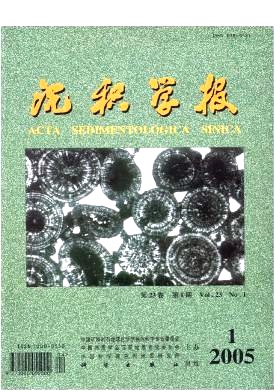HTML
| [1] | 1 杜金虎,易士威,张以明. 二连盆地隐蔽油藏勘探[M].北京:石油工业出版社,2003.101-112. 2 杜金虎,易士威,王权. 华北油田隐蔽油藏勘探实践与认识[J].中国石油勘探,2003,(01):1-10. 3 任建业,林畅松,李思田. 二连盆地乌里雅斯太断陷层序地层格架及其幕式充填演化[J].沉积学报,1999,(04):553-559. 4 祝玉衡,张文朝. 二连盆地下白垩统沉积相及含油性[M].北京:科学出版社,2000.220-232. 5 LinCS,Eriksson K,Li S T. Sequence architecture, depositional systems, and controls on development of lacustrine basin fills in part of the Erlian basin, northeast China[J].AAPG Bulletin,2001,(01):2017-2043. 6 WalkerRG. Deep water sandstone facies and ancient submarine fans: Models for exploration for stratigraphic traps[J].AAPG Bulletin,1978,(06):932-966. 7 吴崇筠,李纯菊,刘国华. 断陷湖盆中的浊积岩[A].北京:石油工业出版社,1988.1-17. 8 吴崇筠,薛叔浩. 中国含油气盆地沉积学[M].北京:石油工业出版社,1992.65-76. 9 刘招君. 湖泊水下扇沉积特征及影响因素--以伊通盆地莫里青断陷双阳组为例[J].沉积学报,2003,(01):148-153. 10 LoweDR. Sediment gravity flows: Ⅱ Depositional models with special reference of the deposits of high-density turbidity currents[J].Journal of Sedimentary Petrology,1982,(01):279-297. 11 HaloutyMT,刘民中. 寻找隐蔽油藏[M].北京:石油工业出版社,1988.41-59. 12 CarterRM. The nature and evolution of deep-sea channel systems[J].Basin Research,1988.41-54. 13 ReadingHG,Richards M. Turbidite systems in deep-water basin margins classified by grain size and feeder system[J].AAPG Bulletin,1994,(05):792-822. 14 林畅松,潘元林,肖建新. 构造坡折带-断陷盆地层序分析和油气预测的重要概念[J].地球科学-中国地质大学学报,2000,(03):260-266. 15 NelsonCH,Karabanov E B,Colman S M. Tectonic and sediment supply control of deep rift lake turbidite systems:Lake Baikal,Russia[J].Geology,1999, (02):163-166. 16 冯有良,李思田. 东营凹陷沙河街组三段层序低位域砂体沉积特征[J].地质论评,2001,(03): 278-286. 17 邓宏文,王红亮,王敦则. 古地貌对陆相裂谷盆地层序充填特征的控制-以渤中凹陷西斜坡区下第三系为例[J].石油与天然气地质,2001,(04):293-303. 18 HylesCH,Eyles N. Subaqueous mass flow origin for Lower Permian diamictites and associated facies of the Grant Group, Barbwire Terrace, Canning Basin, Western Australia[J].Sedimentology,2000.343-356. 19 WynnR,Kenyon N H,Masson D G. Characterization and recognition of deep-water channel-lobe transition zones[J].AAPG Bulletin,2002 (08):1441-1462. 20 McCaffreyW,Kneller B. Process controls on the development of stratigraphic trap potential on the margins of confined turbidite systems and aids to reservoir evaluation[J].AAPG Bulletin,2001, (06):971-988. |






 DownLoad:
DownLoad: